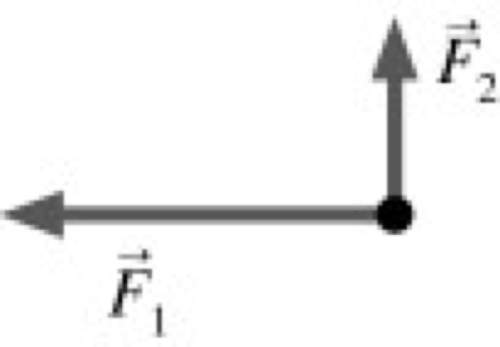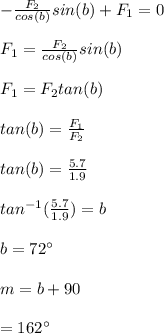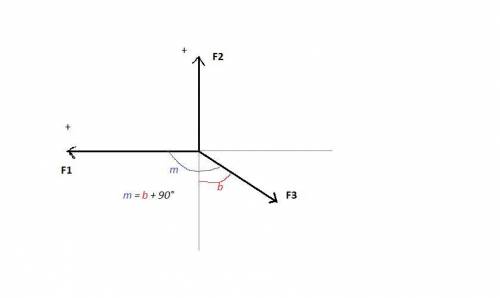
Physics, 24.10.2019 22:43 ehuntsman8221
As shown in the diagram, two forces act on an object. the forces have magnitudes f1 = 5.7 n and f2 = 1.9 n. what third force will cause the object to be in equilibrium?
3.8 n at 108° counterclockwise from
6.3 n at 162° counterclockwise from
3.8 n at 162° counterclockwise from
6.3 n at 108° counterclockwise from


Answers: 3


Another question on Physics

Physics, 21.06.2019 18:00
Awind turbine is initially spinning at a constant angular speed. as the wind's strength gradually increases, the turbine experiences a constant angular acceleration 0.173 rad/s2. after making 2870 revolutions, its angular speed is 132 rad/s. (a) what is the initial angular velocity of the turbine? (b) how much time elapses while the turbine is speeding up?
Answers: 1

Physics, 21.06.2019 22:50
As a car drives with its tires rolling freely without any slippage, the type of friction acting between the tires and the road is 100) a) static friction. b) kinetic friction. c) a combination of static and kinetic friction. d) neither static nor kinetic friction, but some other type of friction. e) it is impossible to tell what type of friction acts in this situation.
Answers: 1


Physics, 22.06.2019 22:30
Suppose that three astronomical objects, 1, 2, and 3 are observed to lie on a line, and the distance from object 1 to object 3 is d. object 1 has four times the mass of object 3, and seven times the mass of object 2. find the distance between objects 1 and 2 for which the net force on object 2 is zero.
Answers: 1
You know the right answer?
As shown in the diagram, two forces act on an object. the forces have magnitudes f1 = 5.7 n and f2 =...
Questions




History, 01.01.2020 17:31


Biology, 01.01.2020 17:31


Mathematics, 01.01.2020 17:31


Mathematics, 01.01.2020 17:31

English, 01.01.2020 17:31

Biology, 01.01.2020 17:31

Mathematics, 01.01.2020 17:31


Mathematics, 01.01.2020 17:31


Mathematics, 01.01.2020 17:31

Mathematics, 01.01.2020 17:31


Mathematics, 01.01.2020 17:31



 and
and  are known
are known 
 and b) and we have 2 equations.
and b) and we have 2 equations. 





